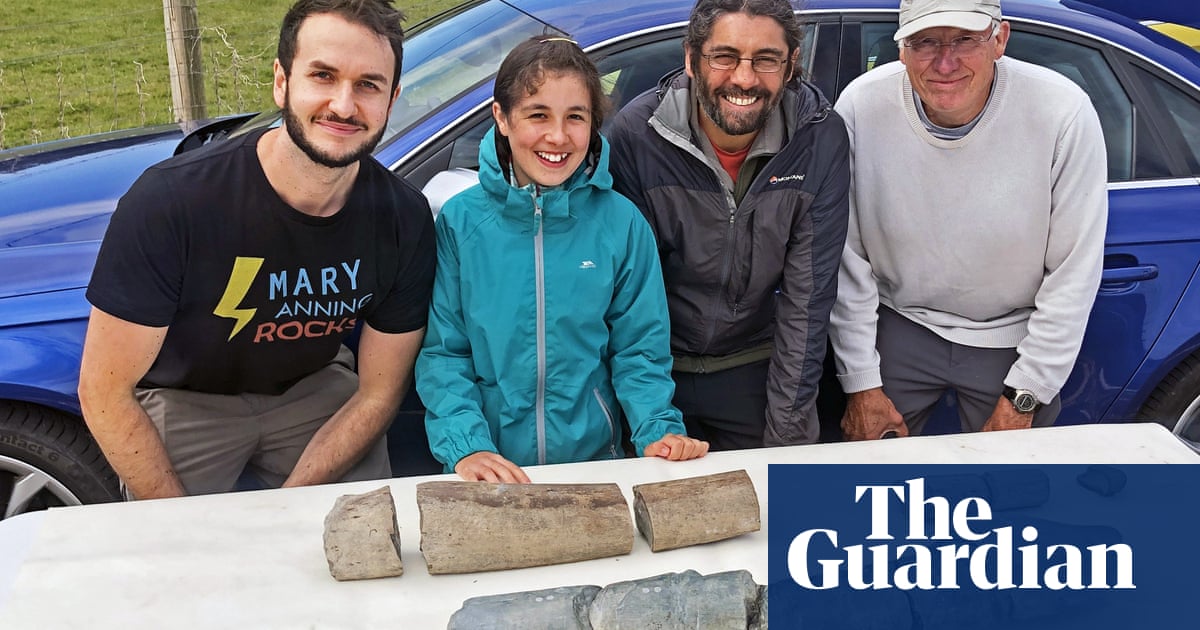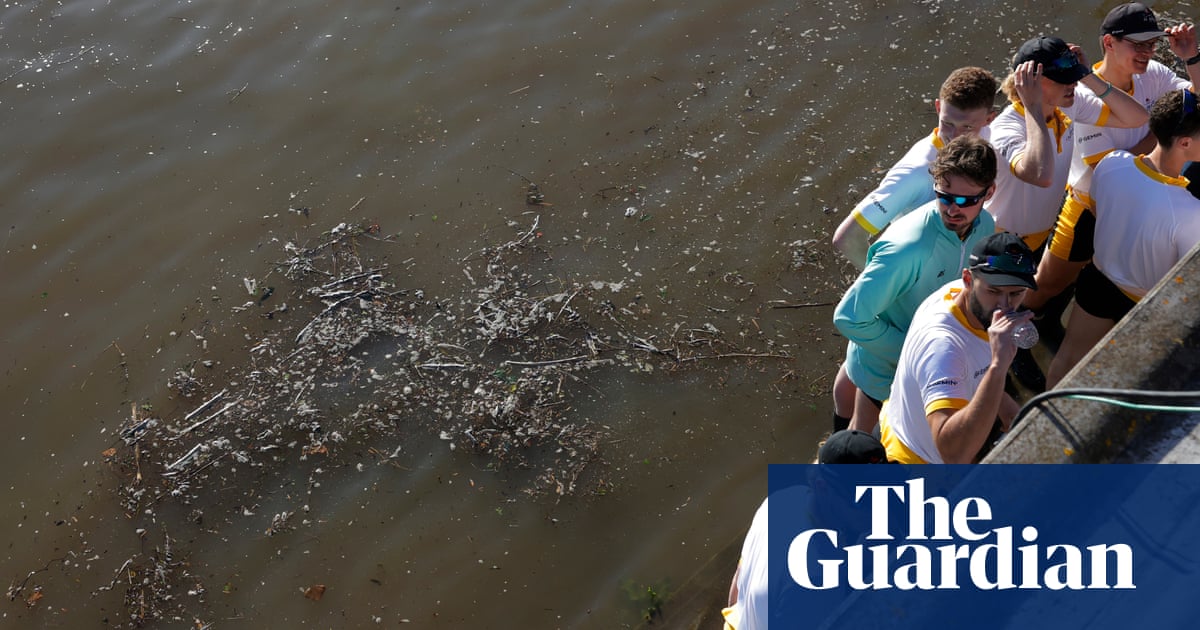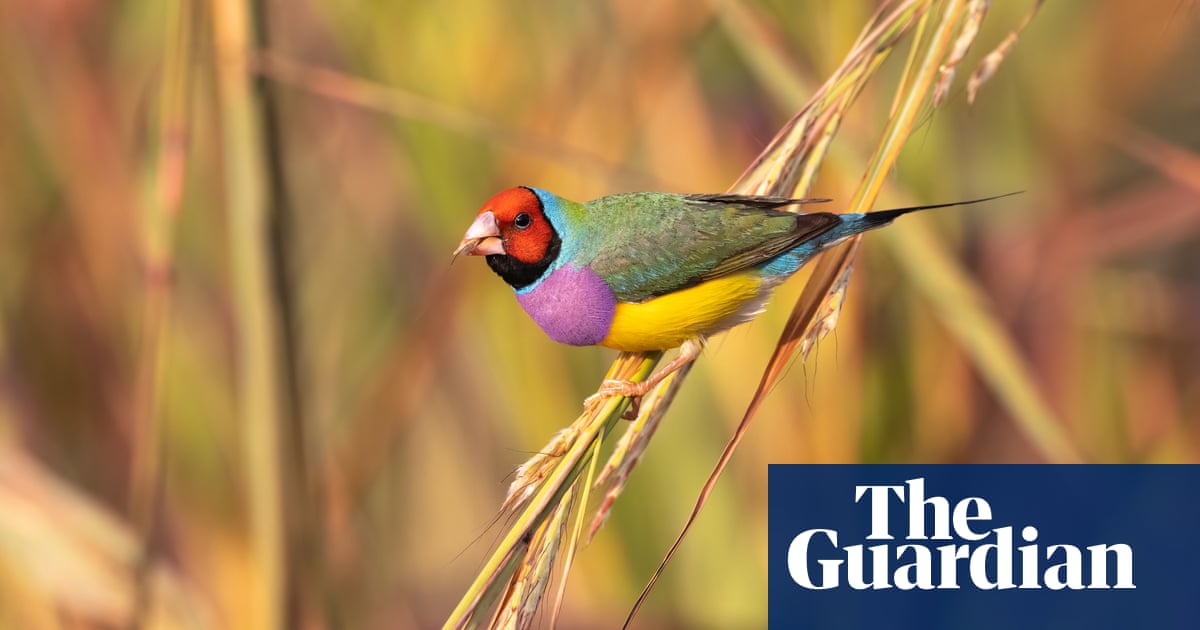Fossils found in Somerset by girl, 11, ‘may be of largest-ever marine reptile’ | Fossils


Fossils discovered by an 11-year-old girl on a beach in Somerset may have come from the largest marine reptile ever to have lived, according to experts.
The fossils are thought to be from a type of ichthyosaur, a prehistoric marine reptile that lived in the time of dinosaurs. The newly discovered species is believed to have roamed the seas towards the end of the Triassic, about 202m years ago.
The team have named the species Ichthyotitan severnensis, meaning “giant fish lizard of the Severn”.
“This giant probably represents the largest marine reptile formally described,” said Dr Dean Lomax, a palaeontologist at the University of Bristol and co-author of the research, adding that comparisons with fossils from other ichthyosaurs suggested the creature would have been about 25 metres in length – about the size of a blue whale.
“Of course, we have to be careful with such estimates because we are dealing with fragments of giant bones,” he added. “But nonetheless, simple scaling is commonly used to estimate size, especially when comparative material is scarce.”
The team say samples from the fossils suggest the creature was still growing. And there is another twist.
“We believe these ichthyosaurs are the last surviving members of the family called shastasaurida, which went extinct during the global mass extinction event at the end of the Triassic,” said Lomax.
Writing in the journal Plos One, Lomax and colleagues report how the first pieces of the jawbone were discovered by Justin Reynolds and his daughter Ruby – co-authors of the paper – on the beach at Blue Anchor in May 2020, when Ruby was 11.
The pair contacted Lomax, who alongside members of the Reynolds family, joined the search for further pieces. Among those who also joined the hunt was Paul de la Salle, an expert from the Museum of Jurassic Marine Life in Dorset who in 2016 had discovered a jawbone from what appeared to be a new species of ichthyosaur at a beach in Somerset. That specimen was subsequently studied by Lomax and colleagues.
When the team fitted the fragments of the new fossil together they found it belonged to the same species as the specimen discovered by De la Salle.
In both cases the fossilised bone is the surangular – a long, curved structure that sits at the top and back of the lower jaw.
Lomax said: “When my team described the first specimen in 2018, it showed unusual features that suggested it might represent something new. However, we refrained from giving it a name, considering that it was incomplete and also partly eroded.”
“Having two examples of the same bone with the same unique features from the same geologic time zone supports our identifications of something new, especially when combined with the fact that these two bones appear roughly 13m years after their latest geologic relatives with a name,” he added.
Dr Nick Fraser, a palaeontologist at National Museums Scotland, who was not involved in the study, said the identification of the bone as part of the lower jaw from an ichthyosaur was very convincing.
“It hints that its one-time owner was a gigantic beast, possibly one of the largest marine reptiles of all time,” he said.
But Fraser said it was questionable whether the creature should be assigned as a new species. “For me it is a bit too incomplete for that,” he said.
Source link




